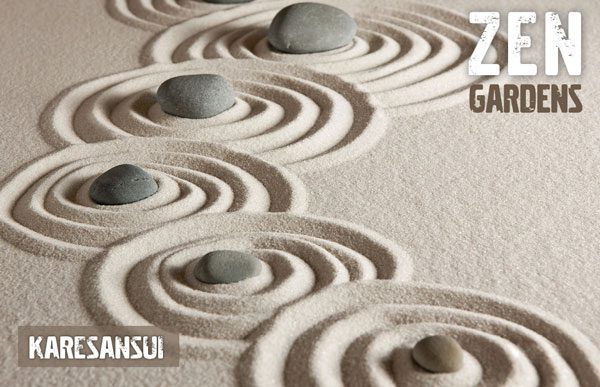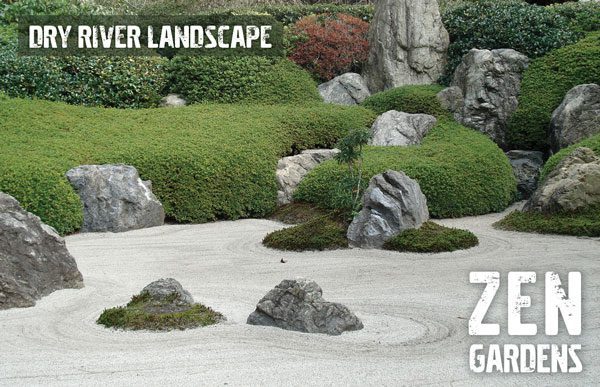Let’s face it; 2020 has been a pretty stressful year thus far. From politics to pandemics, the start of the new decade has been rough. It is in these challenging times that we need most to connect to our inner selves through mindfulness and thoughtful meditation with nature. And a Zen garden is a perfect way to do just that.
Karesansui
One of the most common types of Zen gardens – and the one most people probably think of – excludes plants and focuses on just gravel, sand, and stone.

These types of Zen gardens are called karesansui, which means “dry landscape.” In these karesansui gardens, it’s all about using few materials to interpret the world around you symbolically.
Stones standing upright can be used to represent trees, and arching stones represent fire. Also, the raking of the gravel in curves and patterns is used to convey water (there should not be any actual water in a Zen garden).
Design Ideas
Create mountains from the gravel and use the gravel, stone, and sand to build simulation “dry waterfalls.” You can also lay stone paths and install clean, simple bridges – these add dimension and create focal points within the garden.

Sculptures also work well in this regard. There is no one way to design a Zen garden. The way you interpret and create your garden is part of what makes it so unique. It’s your work of art and your place of calm and focused introspection.
For those wanting some greenery, you can use plants. However, most people will tell you to keep them to a minimum and use low-growing, spreading plants rather than upright ones.

Moss is a great option and is easy to plant and maintain as well as being visually appealing against the minimalist gravel and stone aesthetic. Ferns and shrubs should be kept mostly to the border of the garden rather than in the center.
Benefits Of A Zen Garden
Zen Buddhist monks created the first Zen gardens in the 6th-century as a meditative aid. Later, the gardens became teaching tools for the basic Zen principles and concepts.
What is so remarkable about a Zen garden is that the meditative and thoughtfulness benefits come about not just in viewing the garden, but in maintaining it as well.
You see, while a Zen garden may seem simple on its surface, there is work to be done to maintain it. Work includes keeping the raked lines crisp and clean and clearing out any roots and vegetation that may poke through the gravel and rocks.
A Zen garden is never finished, and it is that daily maintenance of the garden that is such a powerful and mindful meditation practice for the gardener.